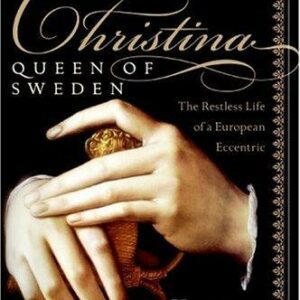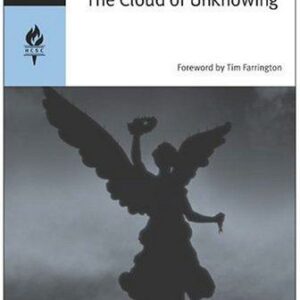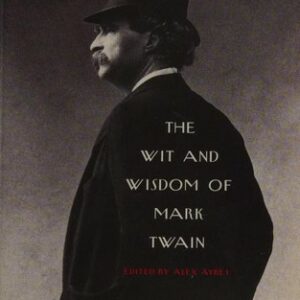Diasporican
$32.50
| Title | Range | Discount |
|---|---|---|
| Trade Discount | 5 + | 25% |
- Description
- Additional information
Description
JAMES BEARD AWARD WINNER • Over 90 delicious, deeply personal recipes that tell the story of Puerto Rico’s Stateside diaspora from the United States’ first Puerto Rican food columnist, award-winning writer Illyanna Maisonet.
“A delicious journey through purpose, place, and the power of food that you won’t want to miss.”—José Andrés, chef, cookbook author, and founder of World Central Kitchen
ONE OF THE TEN BEST COOKBOOKS OF THE YEAR: Simply Recipes
ONE OF THE BEST COOKBOOKS OF THE YEAR: The New York Times, Los Angeles Times, Saveur, Smithsonian Magazine, Delish, Vice
Illyanna Maisonet spent years documenting her family’s Puerto Rican recipes and preserving the island’s disappearing foodways through rigorous, often bilingual research. In Diasporican, she shares over 90 recipes, some of which were passed down from her grandmother and mother—classics such as Tostones, Pernil, and Arroz con Gandules, as well as Pinchos with BBQ Guava Sauce, Rabbit Fricassee with Chayote, and Flan de Queso.
In this visual record of Puerto Rican food, ingredients, and techniques, Illyanna traces the island’s flavor traditions to the Taino, Spanish, African, and even United States’ cultures that created it. These dishes, shaped by geography, immigration, and colonization, reflect the ingenuity and diversity of their people. Filled with travel and food photography, Diasporican reveals how food connects us to family, history, conflict, and migration.“Each recipe is easy to follow, and each chapter is an education on Puerto Rican food and the colonial history that shaped it. Ms. Maisonet lets us into her own kitchen, alongside her mami and nana, sharing their resilience and care for one another. Diasporican reads like the best memoirs: engaging, educational, and, at times, laugh-out-loud funny.”—The New York Times
“In this vibrant volume about Puerto Rican food, Illyanna Maisonet offers compelling explanations of indigenous ingredients and great meditations on the things we take for granted in cooking. . . . Diasporican has recipes any fan of Puerto Rican cuisine will love.”—VICE
“Her book is a memoir, cookbook, and retelling of Puerto Rican history and it’s a testament to her life’s work of documenting and preserving food throughout the Puerto Rican diaspora.”—NPR
“In her powerful and personal new cookbook, Diasporican, Puerto Rican food writer Illyanna Maisonet pokes holes in common assumptions about the island and shows dishes from Puerto Rico well outside the tourist center of San Juan.”—Garden & Gun
“Maisonet’s full powers are on display in her forthcoming debut cookbook. . . . It’s a book that deals with grief and childhood trauma and the long-reaching effects of American colonialism. It’ll also make you want to drop everything and immediately cook up a pot of arroz con gandules or carne guisada, or a sizzling hot plate of tostones.”—KQED
“A vivid, compelling book.”—Eater
“This one-of-a-kind cookbook is highly recommended for its combination of island flare, little-known history, and tons of personality.”—Booklist (starred review)
“Food writer Maisonet discards the rose-colored perspective many cookbooks offer in this provocative look at the food traditions of Puerto Rico. . . . The ample headnotes are as bracing as the spicy-enticing food in this bold combo of memory and recipes.”—Publishers Weekly
“Diasporican is a delicious journey through purpose, place, and the power of food that you won’t want to miss.”—José Andrés, chef, cookbook author, and founder of World Central Kitchen
“This book BRINGS IT: In voice, instructions, visuals, history, education, and hilarity—a decolonization of the cookbook world like few others.”—Gustavo Arellano, author of Taco USA: How Mexican Food Conquered America
“This is a treasure of a book—an honor to hold, a delight to read, and a feast to cook from.”—Pati Jinich, Mexican chef, cookbook author, and television host
“The strength of Diasporican is that it moves the conversation beyond the island, drawing us into the essence of Puerto Rican food as it morphs across North America. In these pages, we go to New York, New Jersey, Connecticut, Hawai’i, Chicago, California, and beyond, getting a real sense of what matters most in Puerto Rican culture and civilization—family, friends, spirit, ancestors, rhythm, and joy-inducing flavor.”—from the foreword, by Michael W. TwittyIllyanna Maisonet was the United States’ first Puerto Rican food columnist for a major newspaper, the San Francisco Chronicle, and sold out pop-up dinners across the San Francisco Bay Area. An IACP award winner for narrative food writing, she has collaborated with José Andrés for Steven Spielberg’s West Side Story wrap party, contributed recipes to Rancho Gordo, authored a crowdfunded cookbooklet, and has written for the Los Angeles Times, Bon Appétit, Saveur, Food52, Food & Wine, Lucky Peach, and more.
Michael W. Twitty is a food writer, independent scholar, culinary historian, and author of the award-winning The Cooking Gene. He is personally charged with preparing, preserving, and promoting African American foodways and its parent traditions in Africa and her Diaspora and its legacy in the food culture of the American South. He is also a Judaic studies teacher from the Washington, D.C., area.Introduction
How I became a cook is not a romantic story. I learned how to cook Puerto Rican food from my grandmother, Margarita Galindez Maisonet. Margarita was born in 1938 in the campo of Manatí, on the northern coast of the island not too far from Hacienda La Esperanza, a former sugarcane plantation. When Margarita was nine years old and in the third grade, she was sent to live with her Titi Emilia. That was the end of Margarita’s formal education. That was also the end of seeing her biological mother for several decades. Margarita went to work as a “domestic” during a time when people didn’t have to apologize for deep-frying their foods, when it was a way of life. There would be no passing down of heirloom cookbooks (I don’t think my grandma ever owned a cookbook), words of encouragement, or time to enjoy a childhood. By the time that Margarita was fourteen years old, she was already pregnant with the first of her seven children, Carmen, my mother. Margarita, Carmen, and I became cooks out of economic necessity. We did not have the privilege of cooking for pleasure or joy. Our story is one of generational poverty and trauma with glimpses of pride and laughter, all of which have been the catalysts of ample good food in my life.
My own days begin with only the sound of my feet shuffling through dawn’s sleepy light. I turn on the stove. Shuffle to the sink; the faucet knob squeaks and the aerator spits. My black pinky toenail and I wait impatiently for the spouted Le Creuset pot to fill with water. Shuffle to put the pot on the burner. The pour-over cone goes on top of the coffee mug, the coffee filter into the pour-over cone, then the coffee grounds. In the meantime, I open all the windows in the front of the house to let the morning coolness seep through the mesh screens. By the time my shuffling feet make it back to the stove, the water is bubbling. I pour the water over the coffee grounds, and the conjured smell of foggy mountains in the interior of Puerto Rico fills my California kitchen. The water sinks into and penetrates the cone, sending the dominion brew into the cup below. A flourish of cream ends my ceremony. This entire process mirrors my late grandmother’s morning routine, although her pot of choice was a small aluminum Farberware made in the Bronx, and her pour-over cone was a colador. She began every waking morning with this routine, a necessary moment of meditation and coffee to galvanize her weary body into the next step—starting the daily meals, which always consisted of rice and beans.
Many of the old Puerto Rican recipes aren’t quick and easy, which might be one of the reasons that the food of the island hasn’t exactly taken off in the land that sits mere hours away. Another reason is probably because people don’t understand the cuisine. Hell, most people don’t understand us! “How can brothers and sisters from the same two parents range in color from white to Black?” they ask. Colonialism. There are white Puerto Ricans getting radical and surfing in Rincón with sun-bleached blond hair, and Black Puerto Ricans with afros creating arts and crafts in Loíza. And everything in between. And our food reflects that diversity. We know how much people love to have things simplified so it all fits neatly into a little box. The truth is, Puerto Rican cuisine shares a lot in common with the cuisines of Hawai‘i, Guam, and the Philippines—all the places that got f***ed by Spanish and United States colonialism. To most, Puerto Rico is just a pit stop on their boat cruise to the Bahamas. “I loved Old San Juan and mofongo” is the common response I hear when I tell someone I’m Puerto Rican. To Puerto Ricans, Puerto Rico represents a constant battle for land and a broad understanding of our identity.
When my family first came to the States and my mother was enrolled in elementary school, she didn’t speak any English. During the country’s Cold War–era security push, it became necessary to read and write English well, which meant that racist policies, such as the “No Spanish” rule, lingered in the newly desegregated schools. And so, my mother just didn’t speak. It was a decision that would mold her personality to this day (and the reason that I don’t speak Spanish). A more confrontational person might have rebelled and fought. That’s not my mother’s way. How could she have been confrontational at five years old? Well, ask my mom what happened when my kindergarten teacher wouldn’t let me wash my hands after I went to the bathroom. All hell broke loose! I suppose because of my mother’s inability to speak out, she made sure that I was the opposite of her in that way.
Anyway, during Margarita’s (my nana’s) first years in the States, she spent her mornings in the fields picking produce, spent her evenings in the kitchen cooking for her husband and children, and spent her nights procreating more children. Every day. Routines and rotations of Puerto Rican recipes passed down to her from her aunt, who raised her, and her biological mother. “The mama who gave birth to me, or the mama who raised me?” she’d always clarify when asked about her mother. By the time that I arrived on this spinning marble of malachite and lapis lazuli, Nana already had a few recipes in the rotation that had been absorbed, digested, and regurgitated as “American”—spaghetti, oven barbecue, hamburgers, meatloaf, and pancakes the size of dinner plates. But she mostly made Puerto Rican food. And, for Nana, as someone who was a part of what would eventually become the 5.5 million Puerto Ricans living Stateside, mostly on the East Coast and in Florida, being on the West Coast always emphasized a pivotal issue: No one seems to know anything about Puerto Rican food. Sometimes, not even Puerto Ricans.
Puerto Ricans are quick to argue about the roots and regulations of what Puerto Rican food is. Honestly, they just love to argue. (Guilty.) There are Puerto Ricans who don’t know shit about their own cuisine. No shade. That tends to happen when you believe it’s your birthright; you take it for granted. Sometimes it feels like, somewhere along the line, Puerto Ricans lost their way. And with it, their food. With colonization, that isn’t entirely unintentional. There can be several arguments against why there’s no emphasis on the beauty of Puerto Rican cuisine. Puerto Ricans don’t tend to be cerebral about their food but rather emotional.
More than 80 percent of food consumed in Puerto Rico is imported. The costs of importing products, especially food, make them more expensive than if they were produced locally. Most of the time, the food is not even good quality because it has lost its freshness during the long shipping to the island! And don’t let it be hurricane season while all this is happening. United States citizens made such a fuss over the “pandemic pantry.” Puerto Ricans’ pantries are basically in a perpetual state of survival mode. The pandemic pantry is a lot of folks’ everyday pantry. And all the inequity of the United States’ industrial cookery culture has really left its mark on Puerto Rican cooking. There’s not a single word that I could use to define Puerto Rican cuisine. If I were forced to pick one, I’d choose sofrito. This herb paste made of culantro, cilantro, tomatoes, garlic, onion, and chiles or other peppers is the bedrock of our cuisine, which is a straightforward, proletariat proposition—something flavorful, hot, and filling to maintain your strength while you work.
We are Taino, Spanish, and African. The peaceful Taino were not native to the Caribbean; much like their enemies, the cannibalistic Caribs, they migrated to the Antilles from South America. Lots of Taino culture still runs through our veins and our vocabulary—words such as barbecue, hammock, canoe, and iguana. The Taino presence is still felt on the island of Borinquen. The Taino called the island Borinquen (land of the brave lord), which is why Puerto Ricans call themselves Boricuas to this day. The Spanish renamed it Porto Rico. While the legend of the Jibaro farmer might be one of folklore, the Taino influence lives on.CN
Additional information
| Weight | 39.2 oz |
|---|---|
| Dimensions | 0.9200 × 8.2900 × 10.3000 in |
| Author | |
| Imprint | |
| ISBN-13 | |
| BISAC | |
| Format | |
| Audience | |
| Subjects | cooking book, guava, gifts for travelers, Best cookbooks, caribbean cookbook, travel gifts, cook books, cookbooks best sellers, cooking gift, puerto rican cookbooks, CKB002010, plantains, puerto rican cookbook, puerto rican snacks, puerto rican food, puerto rican coffee, pilon coffee, puerto rico coffee, salchichon puerto rico, cook book, diversity, Cookbooks, holiday, cookbook, CKB030000, comfort food, Christmas, food photography, culture, plantain, puerto rican, puerto rico, cooking gifts, gifts for foodies, travel book, holiday gifts, diaspora |











